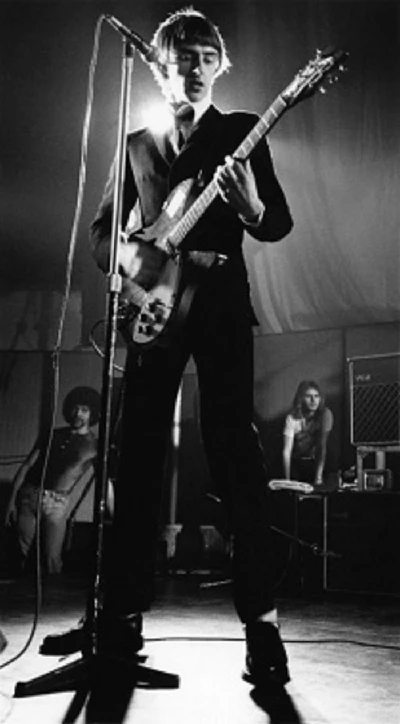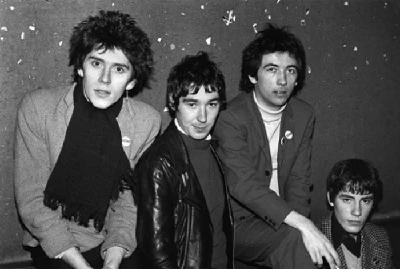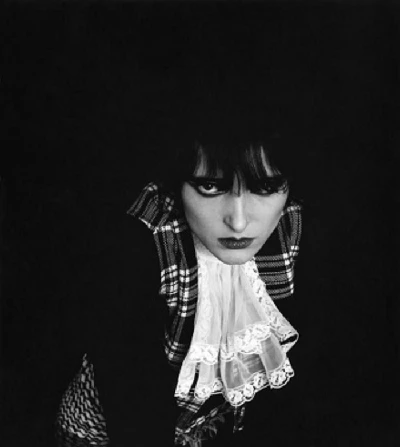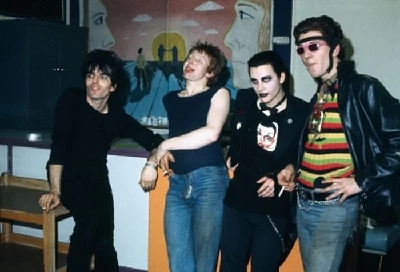published: 25 /
5 /
2013
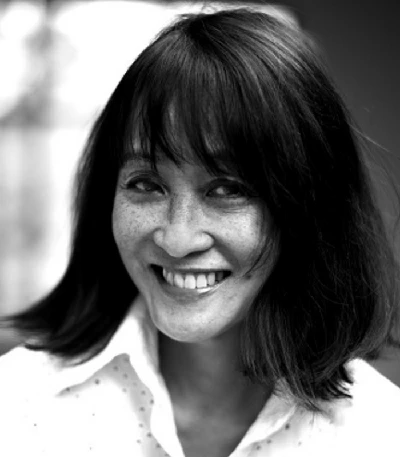
Dave Goodwin talks to acclaimed photographer Sheila Rock about her new book ‘Punk+’, which features her classic photos of the 70's punk era
Article
Sheila Rock first came to Britain in 1970 from America after she finished college in Boston. She started work in Britain by being in the right place at the right time when she was asked to shoot for the women’s magazine ‘19’. Sheila has since then gone on to take photographs at such major London establishments as the West End Theatre, the Royal Opera House and the Barbican and also of a plethora of artists, singers and actors/actresses. As well as having work in ‘19’ she has also had work published in ‘Time,’ ‘Elle’, ‘Glamour’, ‘The Face’, ‘Rolling Stone ‘and ‘The Sunday Times’ among many others.
Her first book, 'The Way of the Tibetan Monk', was published in 2004 and was accompanied by several exhibitions around the world. Now she has published her second book. ‘Punk+’ is a fantastic set of images of an era of British music that will never be forgotten, and includes iconic images of the likes of Siouxsie, Debbie Harry, John Lydon, the Subway Sect, the Buzzcocks, Generation X and Paul Weller. The book itself is an imagery bible of the few years surrounding the punk movement, and portrays not only the music but more importantly to Sheila its fashion and people.
Pennyblackmusic caught up with one of the world's most influential photographers.
PB: You came to England in 1970, Were you working for anyone at the time? What did you do when you first came here?
SR: I was a student. I wasn't working or anything like that. No, I was a student at the London School of Film and England was profoundly grey. It felt like it was in the war time. I wasn't here in the war, but it was so depressed that it felt like that. Nowadays London is rather a glamorous city, but in those days it was grey and there was so little money around. It was super drab!
PB: When did you discover your photographic talents and when did you get your first camera?
SR: Well, I inherited my first camera in my teens. I inherited a Nikkormat, and I carried it around with me for many years. I went around photographing door knobs and plants, as one does while you are walking around. I think the very first time I ever did an assignment was when I had a girlfriend who was a potter, and she was a very clever designer who actually designed costumes for Roxy Music and who was also Brian Eno's girlfriend. Her name was Carol McNicoll, and she asked me if I would take some photographs of her for a women's magazine called’ 19’, which was around in the 1970s and 1980s and was the equivalent of ‘Elle ‘and ‘Glamour’ today.
She said, “I don't feel very comfortable getting my photo taken, and I have seen some snaps of yours, and let's see if you can do some nice pictures”, so I did some pictures of her and I took them to ‘19’, and they asked if I would be interested in doing more.” And I went, “Wow' Yeah, okay!” And I remember the editor a woman called Maggie saying, “Oh, if you see anything interesting when you're out and about, because I understand that you carry your camera around with you, show it to me, and if I find it interesting we'll run it.
That was not the reason I carried my camera around with me, but maybe the reason why I photographed Acme Attractions, not because I was commissioned to do that, but because for an American Acme Attractions was quite extraordinary. Rock musicians used to go down there. It was so colourful. You had larger than life characters who used to inhabit it,
PB: Where about was it?
SR: It was in the basement in one of the antique markets in King’s Road, and you kind of had to know about it because it was like a hole in the wall, but like a hole in the basement if you know what I mean. It was decked out in the most amazing Beatles memorabilia and Vespas, and it had every sort of 60's retro vibe to it, and people used to go there and buy second hand clothes.
But then I discovered by doing this book that one of the reasons for the second hand clothes and that vintage look was because no-one had any money, and Britain was on a three day week and no-one was producing fashion, not in the normal sense. And so all the shopkeepers in all the clothes shops had to really go back and look at what was available, and so hence retro. It wasn't, however, retro fashion. It was when second hand clothes came in.
I never had that knowledge then, but it was really interesting how economics had a hold on that time. Every young person that wanted to be different and cool was sort of making things up as they went along. They didn't have a lot of money, so they would customise their look and their clothes and that was kind of the birth of punk...
PB: I was just going to say it sounds like you're hinting at the first stages of the punk movement...
SR: Yeah, it all came out of poverty, and also from incredible energy and the need to be creative. It was a profound difference to America, as in America people don't express themselves in the way that the English do and dress up and form tribes. There were no sorts of things like Mods and Rocker, and people didn't really express themselves through their fashion,
PB: Do you not think that English people are a little more refined than Americans?
SR: I don't know about refined. The English are a hugely creative nation. Britishness speaks about individuality. People want to be different, want to show off and to express themselves, and because they had very little money they did it through themselves or their cars or the motorcycle they owned. America, however, is bigger and more plentiful, and people expressed their quirkiness in a different kind of way. In a strange sort of way America is a bit samey or more middle of the road than Britain, I think.
PB: It wasn't so much the music then, but the fashion that drew you to the punk movement.
SR: Yes, definitely. I saw something going on before the music which was in the fashion. There was a visual phenomenon going on along that short stretch of the King's Road between Vivienne Westwood's and Malcolm McLaren’s and Acme Attractions. It was only a little area, but it seemed like there were hoards of kids going into those shops to check out the clothes. Then a lot of the antique markets and hypermarkets also had these little pockets of people doing interesting things.
And out of that came the music. It was really orchestrated in a more business like way by Malcolm, but he had seen what was going on already in New York City at Max's and with the New York Dolls and he created the Sex Pistols. There were other people doing other things too all about the same time. Dare I say that Malcolm was the first, or at least Malcolm did it in a slicker way. Everyone got on the bandwagon literally months after.
PB: In those days I would imagine it was quite easy to get access to the targets in contrast to the fight we sometimes have today to get a few shots.
SR: Well, to be honest, I haven't done a concert in a long time, but the industry now has changed beyond recognition. The marketing of the star is such that there is an entourage following the star, and with people like the Spice Girls and all the boy bands there are all these people connected to them, but back then it was like the Wild West!
You could do anything with them. It involved a little bit of organisation, but even in those days you couldn't see a punk band until The Roxy came about which was the end of 1876 and the beginning of 1977. I probably stumbled upon what was going on in the beginning of '76, so it was soon after that when I took a lot of these photos. It all happened very quickly, and then it just ended.
PB: It seemed at the time that the punk era just ended. didn't it?
SR: Yeah! it just ended. It suddenly branched out into art bands and new romantics and there were so many other fads..
PB: Two Tone...
SR: Yeah, it manifested itself in the clothes like Two Tone, and everyone was dressing in a different way. If you aligned yourself with Visage, you dressed in a different way. If you were into ska, you would dress in Two Tone gear, and I found it so amazing because you didn't see that in America.
America was a jeans and T-shirt culture. Even now very little of it manifests itself unless you're like Lady Gaga or Madonna, but even then it becomes like a Las Vegas review. It doesn't come from the community or a tribe of people as it did back then.
PB: To mover on to talk about the book itself, I am told that you found a selection of the images for 'Punk+' in your shed. Is that true?
SR: Yeah, I had this box, a red box labelled 'Rough' and with all the pictures from that time. I did throw out a lot of pictures, but for some reason I didn't throw out much of that stuff which related to John Lydon, Paul Weller and the Clash. I've had requests for that stuff, so I kept them in their own special place because I have a very big music archive of artists.
No-one has, however, asked me for bands like Subway Sect who were one of the best punk bands around. Rob Symmons, who was their guitar player, said they got their name because they used to busk in Hammersmith subway and some lived in Surrey I think. They were all quite middle class purists in a wonderfully odd way. They never made any money really from being a band, and they dressed uniformly in Oxfam clothe, They had this anti-chic, anti-fashion, but they all had style.
I think Rob Symmons works in a library now. When I met him recently just to chat, I had not seen him since 1976. He still looks great and trendy, but is very soft-spoken and humble and shy. He is in a band called the Fallen Leaves now.
PB: Who was your favourite person or band to work with? Was it the Subway Sect?
SR: Well, no! I look now at those pictures, and I really like the ones I did of them because the band are really odd and quirky, and it wasn't as if i was telling them all what to do. It was just they were like that.
Rob reminded me that I went to photograph the Clash and they weren't there, but the Subway Sect were because they shared the same rehearsal studios. Bernie Rhodes who was the Clash's manager was also their manager and whenever the Clash weren't there they could use the studio, so I went in there hoping to photograph the Clash. I went in there with one camera and one flash, and probably turned up in a taxi I think, and I thought, "Damn! I have come all this way. I might as well just photograph them."
PB: As you do...
SR: Yeah! (Laughs). And I appeared to have the only set of pictures of the band from around that time and I rather liked them. John Lydon is a gift to photograph.
PB: Really?
SR: Oh! He's not easy, but he's very provocative. He's just so visual, and it's not hard to do a good photo of John. You'd have to be a really bad photographer to get a bad photo of John.
PB: He seems very opinionated.
SR: Oh, he's very hard work, but in terms of getting a good picture he's a gift. The Clash were great because they looked like a great punk band, and they became a great rock band and they just looked amazing. Paul Weller was probably the hardest to photograph because he doesn't give anything out. He just stands there and he just looks at you. I mean he looks very good, but he gives nothing of himself away. Try as one does during a photo shoot to find something in the person, something revealing, he doesn't give anything away. He's so incredibly private.
PB: How do you think the dawn of the digital age has helped professional photographers and how has it affected you?
SR: Well, I have to say I don't enjoy photographing digitally. And nowadays you have to. And depending on the job I have worked on a few different formats. Some people insist you shoot on a Hasselblad, but i just rent that.
PB: Well, they are so expensive anyway.
SR: Yeah, exactly. I would never buy a Hasselblad. Not that it's not a good camera, but it's just the cost of someone's livelihood. And it just seems mad when they come out with a new version every two or three months or so. You think what's the point? What do you shoot with?
PB: I have two 40Ds, but I'm upgrading one in the near future.
SR: How tall are you?
PB: Around six feet.
SR: Right. I always used to envy people like Anton Corbjin being tall, and shooting from much higher up so he views the world from a different height. I'm only five foot four, and so I view it all from a lower perspective and I find that very interesting. It's very good to be a tall person when you are in the pit!
PB: Thank you.
Picture Gallery:-
